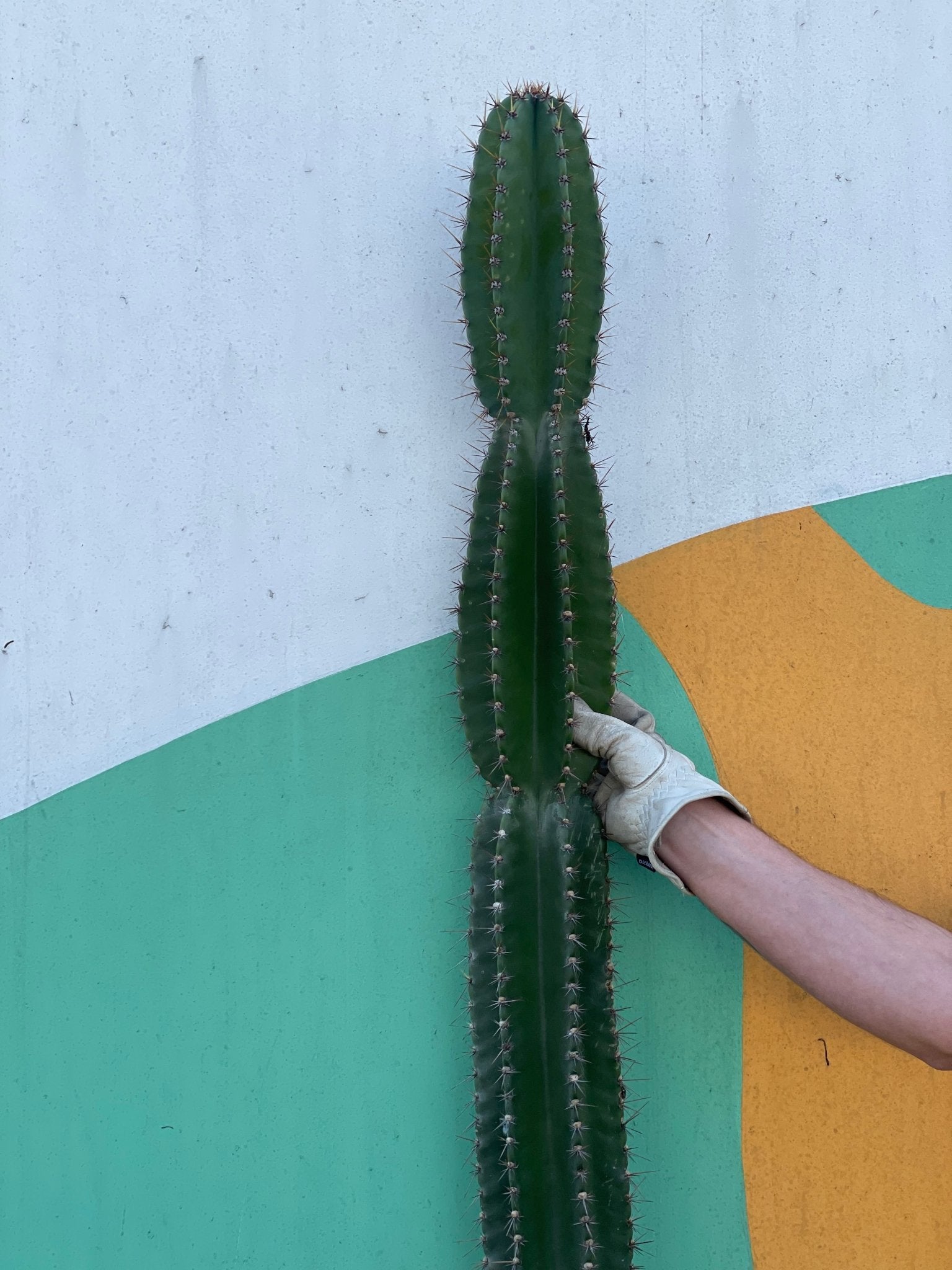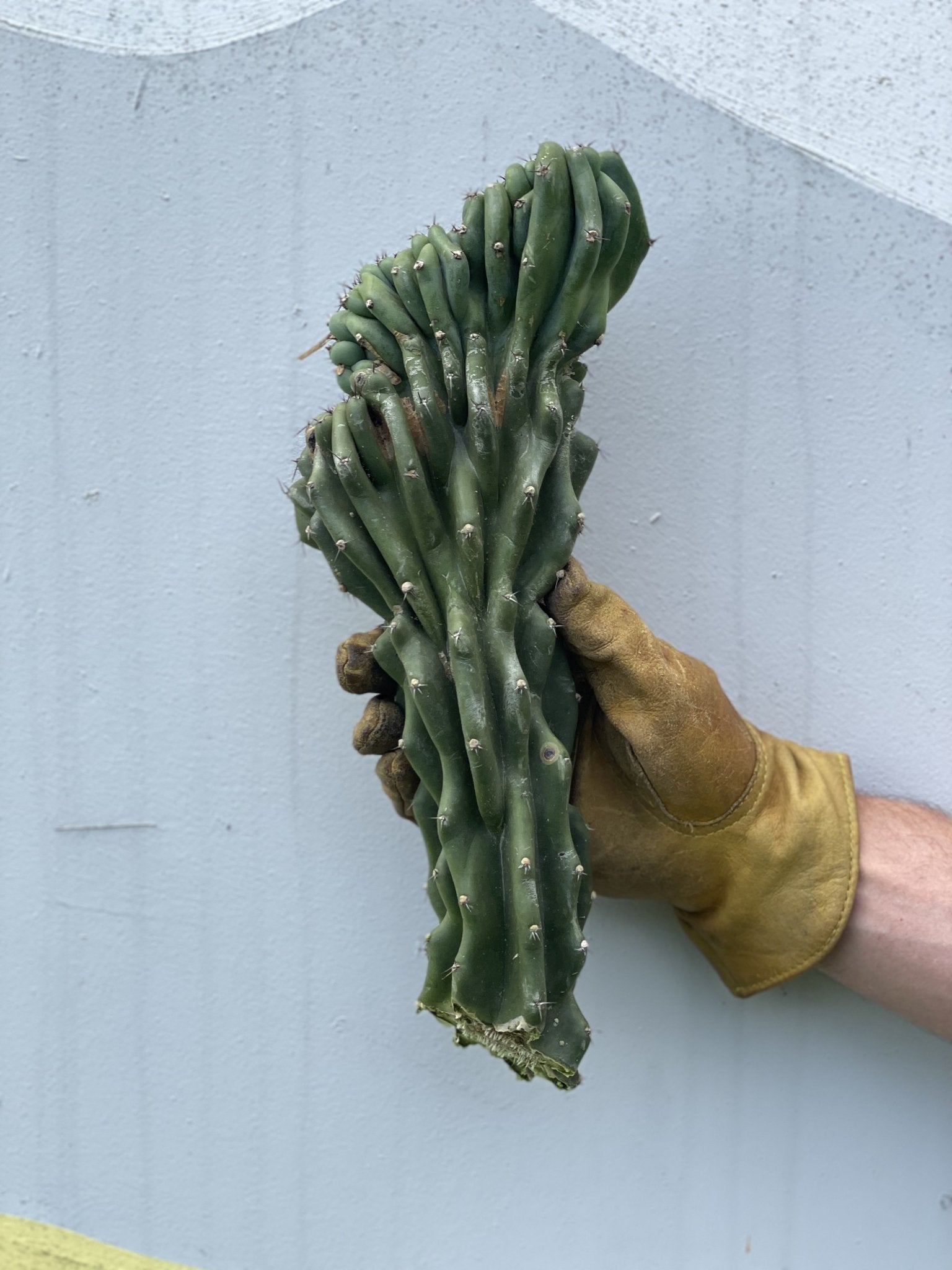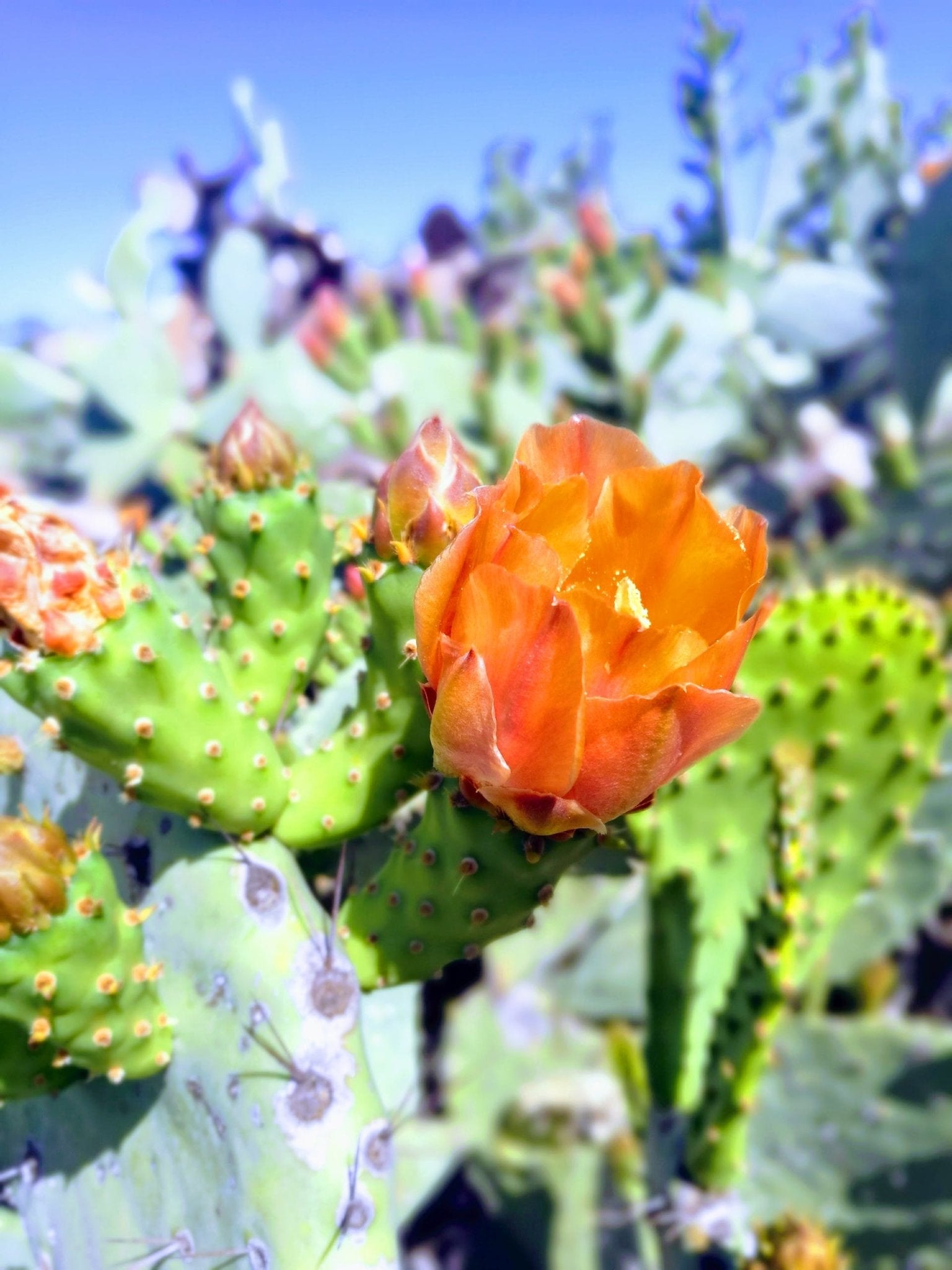Cacti with their unique and diverse forms have fascinated plant enthusiasts for hundreds of years. Among the countless species of cacti, Gymnocalycium Mihanovichii stands out for its exceptional beauty and abnormal characteristics.
One fascinating element of caring for Gymnocalycium Mihanovichii is the art of grafting, a horticultural technique that has gained immense popularity in recent decades.
In this article, we break down the process of cacti grafting, with a focus on Gymnocalycium Mihanovichii cacti:
What is Cacti Grafting?
Grafting is simply joining plant tissues together to grow as one. Although people often associate this technique with fruit trees, it has found a unique application in the cultivation of cacti, such as Gymnocalycium Mihanovichii.
The motivation behind cacti grafting is that certain cactus species, including Gymnocalycium Mihanovichii, mutate and create visually stunning but fragile growths known as "monstrose" or "cristate" forms.
However, these mutations often can’t survive due to their weakened structure, making grafting a feasible method to guarantee continued growth and preservation.
What is Gymnocalycium Mihanovichii?
Gymnocalycium Mihanovichii, often called moon cactus or chin cactus, is famous for its rich colors and uncommon globular shape.
The most loved varieties often show mutations that result in eye-catching patterns and hues. However, these mutations may compromise the cactus's ability to thrive independently. The good news? That’s where the art of grafting will help you.
To begin grafting, join the crown of a mutated Gymnocalycium Mihanovichii with the rootstock of a more robust cactus, typically a Hylocereus or a similar sturdy species.
As a result, this symbiotic relationship guarantees the mutated crown acquires the essential nutrients and support to flourish, thus creating a stunning and resilient cactus.
The Benefits and Challenges of Cacti Grafting
Cacti grafting presents several advantages, particularly for delicate mutations like those found in Gymnocalycium Mihanovichii. For instance, the hardy rootstock provides stability, resilience against environmental stressors, and increased resistance to pests and diseases.
Likewise, grafting can accelerate the growth of the mutated crown to create a more robust and visually appealing cactus.
However, there are various challenges—such as the potential rejection or incompatibility between the rootstock and the mutated Gymnocalycium Mihanovichii.
Therefore, detailed consideration of the species and a comprehensive understanding of the grafting process are essential for overcoming these challenges.
The Cacti Grafting Process: Step-By-Step Guide
Cacti grafting, although it may seem complicated—especially if you have little horticultural experience—follows a short and easy process:
- The first step is choosing a healthy rootstock that’s compatible with the Gymnocalycium Mihanovichii mutation.
- After that, you must slice your chosen rootstock to create a flat surface that provides an immaculate platform for grafting.
- Then, you must delicately slice the mutated crown of the Gymnocalycium Mihanovichii to create a matching surface for attachment.
- Next, you’ll join the two cut surfaces to provide a snug fit that facilitates the flow of nutrients between the rootstock and the mutated crown.
- To secure the graft, you may use horticultural tape or rubber bands; these hold the plant tissues together while the healing process begins.
Over time, the tissues fuse to allow the Gymnocalycium Mihanovichii mutation to draw sustenance from the hardy rootstock and ensure continued growth and vitality. Of course, the process is relatively straightforward, but you must avoid some of the common pitfalls we talk about next.
Common Mistakes to Avoid When Cacti Grafting
1. Poor Selection of Rootstock
One of the biggest mistakes people make is choosing an incompatible or unhealthy rootstock. Therefore, research and select a rootstock compatible with the Gymnocalycium Mihanovichii mutation. Likewise, guarantee the chosen rootstock is healthy, disease-free, and has a similar growth rate.
2. Inadequate Sterilization
Another major blunder is not sterilizing cutting tools and surfaces. You should always sterilize cutting tools with rubbing alcohol or a bleach solution before making any incisions; this helps prevent the introduction of pathogens that could harm the graft.
3. Mismatched Surfaces
Failing to create precise, matching surfaces for grafting is a standard error. Therefore, ensure that the rootstock and the Gymnocalycium Mihanovichii mutation have clean, flat surfaces for a secure and effective graft.
4. Inadequate Support and Binding
Using insufficient support or binding materials is another bad idea. You should support the grafted cactus using horticultural tape or rubber bands. The binding materials should be snug but not too tight, allowing for the exchange of nutrients while preventing movement that could disrupt the graft.
5. Improper Healing Conditions:
Exposing the grafted cactus to unfavorable conditions during its healing period is a significant error. You should place the grafted cactus in a stable environment with filtered sunlight and minimal disturbance. In addition, you should also avoid overwatering during the initial healing stages because excess moisture can lead to rot.
Final Thoughts
Gymnocalycium Mihanovichii and its mesmerizing mutations have inspired a unique horticultural practice: Cacti grafting.
This intricate yet rewarding process allows you to preserve and showcase the beauty of these delicate mutations; it also ensures the captivating charm of the moon cactus continues to prosper.
As you explore the art of cacti grafting, you’ll not only engage in a fascinating horticultural technique but also contribute to the preservation and evolution of these extraordinary cacti.












Leave a comment